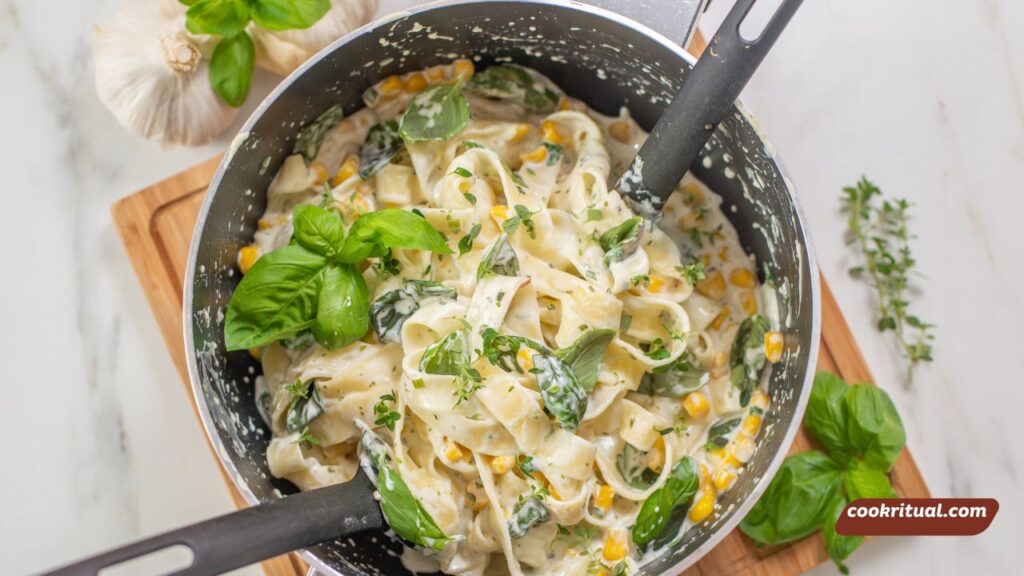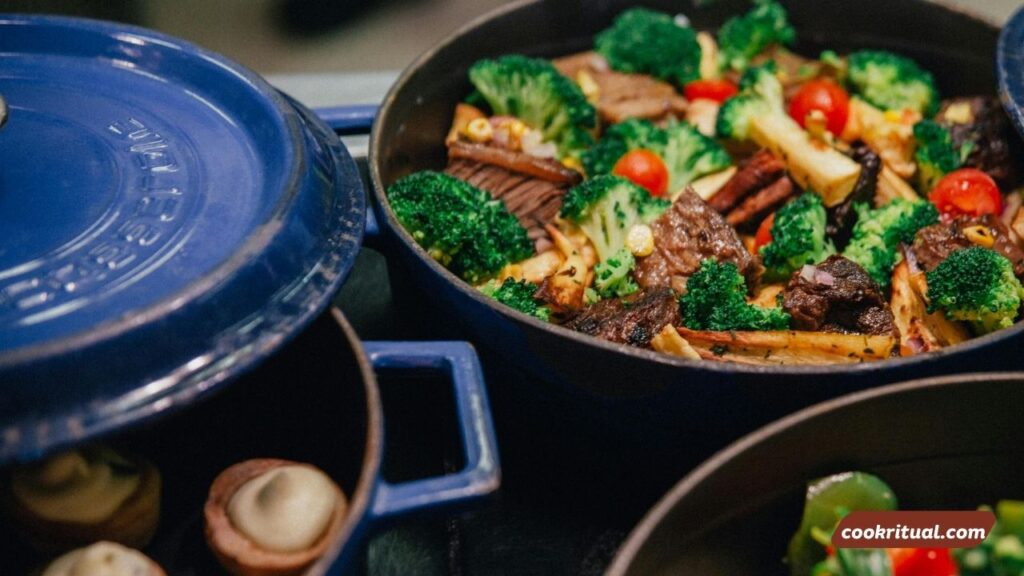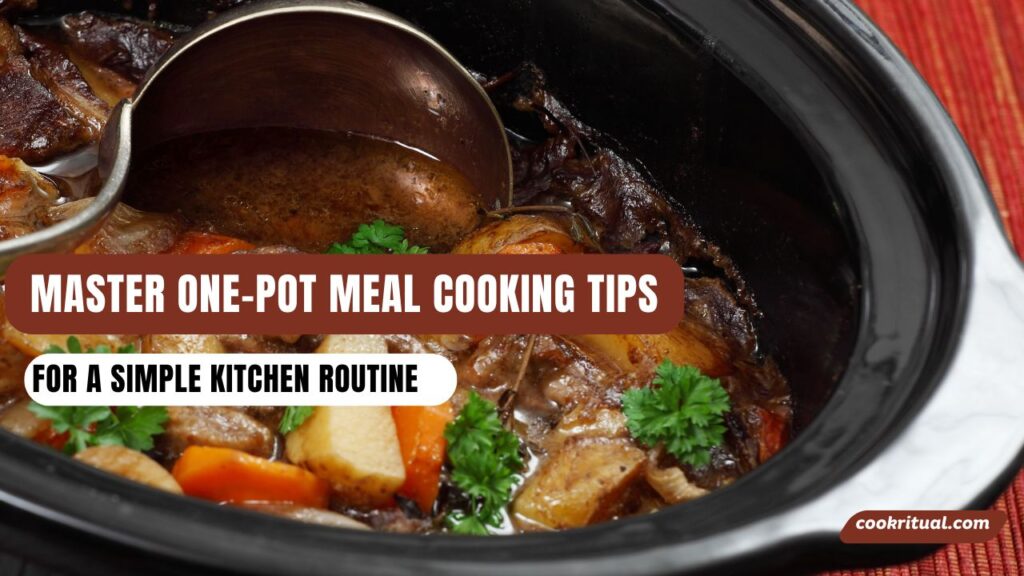One-pot meals are the ultimate kitchen hack for saving time, reducing cleanup, and still eating healthy—even on your busiest days.
Let’s face it: between work, family, and daily responsibilities, most of us don’t have the luxury to spend hours prepping and scrubbing dishes. That’s where one-pot cooking steps in as a real-life lifesaver. Whether you’re a working professional, a health-conscious parent, or just someone looking to spend less time in the kitchen, mastering this simple cooking style can transform your mealtime routine.
Instead of juggling multiple pans and ingredients, one-pot recipes bring everything together—grains, proteins, veggies, and flavors—all in a single dish. From hearty stews to zesty pastas and even lighter plant-based bowls, the possibilities are endless.
In this guide, we’ll walk through everything you need to know about one-pot cooking—from essential tools to time-saving tips and beginner-friendly recipes. Whether you’re new to this method or looking to up your game, we’ve got expert tips to help you cook smarter, cleaner, and tastier.
Contents
- 1 Benefits of One-Pot Meals: Less Mess, More Time
- 2 How to Build a Perfect One-Pot Meal (Step-by-Step Guide)
- 3 One-Pot Cooking Tips for Beginners and Busy Cooks
- 4 Comparing One-Pot Cooking Methods: Stove, Oven, Slow Cooker & Instant Pot
- 5 Best One-Pot Recipes to Get You Started
- 6 Common Mistakes to Avoid in One-Pot Cooking
- 7 Frequently Asked Questions (FAQs)
- 8 Conclusion: One Pot, Many Wins
Benefits of One-Pot Meals: Less Mess, More Time

One-pot meals are more than just a food trend—they’re a smart way to cook with ease and purpose. Here’s why so many home cooks and health lovers are turning to this style of cooking:
Save Time on Prep and Cleanup
Using only one pan or pot cuts down on cooking steps. It also means fewer dishes to wash later. This is perfect for busy families or professionals who want good food without extra hassle.
Stress-Free Cooking
One-pot meals don’t require advanced cooking skills. The recipes are often simple, with ingredients that go into the pot in stages. It takes the pressure off planning, especially during weeknights.
Healthier Home Meals
Since you control what goes in, one-pot meals are often healthier than takeout or frozen food. You can use fresh produce and lean proteins to create balanced dishes without extra additives.
Budget-Friendly
One-pot cooking helps you stretch your ingredients and avoid waste. It’s easy to make big batches that can be stored or frozen. That means fewer trips to the store and more savings over time.
Must-Have Tools for One-Pot Meal Success
The right tools make one-pot cooking easier and more fun. Here are the kitchen essentials that help every meal come together smoothly.
Best Cookware for One-Pot Cooking
| Tool | Why It Works | Best For |
| Dutch Oven | Heavy, retains heat well | Soups, stews, casseroles |
| Instant Pot | Fast, multi-function | Beans, rice dishes, meats |
| Slow Cooker | Hands-off cooking | Chili, roasts, curries |
| Deep Skillet or Saute Pan | Wide base for even cooking | Pasta dishes, stir-fries |
A good Dutch oven can go from stove to oven, while an Instant Pot is great for fast, flavorful meals. Slow cookers are ideal for “set-it-and-forget-it” recipes, and a deep skillet handles everyday dinners with ease.
Maintenance and Cleaning Tips
- Use non-stick spray or a splash of oil to prevent sticking.
- Let pots soak before scrubbing to protect the surface.
- Use soft sponges—no steel wool on non-stick or enameled cookware.
- Read your product manual to know what’s dishwasher-safe.
These small habits will help your cookware last longer and perform better.
How to Build a Perfect One-Pot Meal (Step-by-Step Guide)
The beauty of one-pot meals is how flexible they are. You can mix and match ingredients to suit your taste or diet goals. Here’s how to build your perfect dish every time:
Step 1: Choose Your Base
Pick a hearty base to soak up flavor and keep you full.
- Whole grains: Brown rice, quinoa, farro
- Pasta: Whole-wheat, gluten-free, or regular
- Broth: Vegetable or chicken broth adds depth
Step 2: Add a Protein
Add lean proteins for staying power.
- Animal-based: Chicken, turkey, shrimp, ground beef
- Plant-based: Lentils, chickpeas, tofu, black beans
Check out Harvard Health’s protein guide for smart protein choices.
Step 3: Include Vegetables and Flavor Enhancers
This is where you get creative.
- Veggies: Bell peppers, spinach, zucchini, sweet potatoes
- Seasonings: Garlic, onions, herbs, spices
- Boosters: Tomato paste, soy sauce, lemon juice
Step 4: Simmer, Bake, or Pressure Cook
Follow your recipe’s timing. Some meals need slow simmering, while others cook fast in a pressure cooker or oven.
Bonus Tips for Perfect Results
- Layer ingredients by cooking time (longer first, softer ones last)
- Stir occasionally to avoid burning at the bottom
- Taste as you go and adjust seasoning if needed
With this simple method, you’ll always end up with a delicious, balanced meal—no matter what’s in your fridge.
One-Pot Cooking Tips for Beginners and Busy Cooks
Getting started with one-pot meals is simple, but a few smart tips can make your meals even better. These ideas come from years of kitchen practice and real-world results.
Batch Cooking Strategies
Cooking in bulk saves time and cuts stress. Try doubling recipes so you can freeze leftovers or enjoy them the next day. One-pot meals like chili, curry, and stew freeze well and taste even better after sitting.
Ingredient Prep Shortcuts
Don’t feel bad about using store-bought helpers. Pre-cut veggies, frozen produce, and canned beans are great time savers. Look for low-sodium options when buying canned foods.
Avoid Overcooking
Add soft vegetables like spinach or zucchini near the end of cooking. This keeps them from turning mushy. Brown meats before adding them to slow cookers to improve flavor and texture.
Storage and Reheating Tips
Let leftovers cool before storing. Use glass containers with lids. Reheat gently over the stove or in a microwave. Add a splash of broth or water if the meal gets dry. For more food safety tips, see the USDA’s food storage guide.
Comparing One-Pot Cooking Methods: Stove, Oven, Slow Cooker & Instant Pot
Each method offers a different cooking experience. Some work better for fast meals, others for hands-off prep. Here’s a quick look:
Method Comparison Table
| Method | Pros | Cons | Best For |
| Stove | Fast and flexible | Needs attention | Stir-fries, pasta, quick soups |
| Oven | Even heat, great texture | Takes longer | Bakes, roasts, casseroles |
| Slow Cooker | Hands-off, low energy use | Long cook times | Stews, chili, shredded meats |
| Instant Pot | Very fast, locks in flavor | Learning curve for settings | Beans, rice dishes, curries |
If you’re new to pressure cooking, check out Consumer Reports’ Instant Pot guide for helpful safety and usage tips.
Choose your cooking method based on your schedule and recipe type. It’s okay to stick with just one method, especially when starting out.
Best One-Pot Recipes to Get You Started

One-pot recipes come in all flavors and styles. Start with these simple, crowd-pleasing dishes that anyone can make, even on a busy weeknight.
Hearty Chicken and Rice
- Ingredients: Brown rice, boneless chicken thighs, carrots, celery, onion, chicken broth
- Tip: Sear chicken first for extra flavor
- Variation: Swap chicken for tofu for a vegetarian version
Veggie Lentil Curry
- Ingredients: Green lentils, coconut milk, spinach, diced tomatoes, garlic, curry powder
- Tip: Add spinach near the end
- Variation: Use red lentils for a quicker cook time
One-Pan Pasta Primavera
- Ingredients: Whole wheat pasta, zucchini, bell peppers, cherry tomatoes, olive oil, garlic
- Tip: Stir often to prevent sticking
- Variation: Add shrimp or chickpeas for protein
Beef and Sweet Potato Stew
- Ingredients: Stew beef, sweet potatoes, onions, beef broth, thyme
- Tip: Cook low and slow for tender results
- Variation: Try it in a slow cooker for 6–8 hours on low
Common Mistakes to Avoid in One-Pot Cooking
Even though one-pot cooking is simple, there are a few pitfalls to avoid. These tips come from real-life kitchen experiences and will help you get the best results every time.
Adding All Ingredients at Once
Different foods cook at different speeds. If you add everything in one go, some parts may end up overcooked while others are still raw. Add hard veggies (like carrots or potatoes) first, and soft ones (like spinach or peas) last.
Not Browning Meats First
Browning adds flavor and texture. If you’re using a slow cooker or Dutch oven, take a few extra minutes to sear meat before adding liquids. This boosts the dish’s taste without needing extra seasoning.
Overcrowding the Pot
Too much food in the pot can cause uneven cooking. It might also lead to soggy textures. Stick to recipe amounts or split your batch in two if needed.
Skipping Seasoning Layers
Season as you go—don’t wait until the end. Building flavors throughout the process helps you avoid a bland final result. Add herbs, spices, or sauces in stages.
For more cooking basics and safety, check out USDA’s kitchen resources.
Frequently Asked Questions (FAQs)
Can I make one-pot meals with frozen ingredients?
Yes, frozen veggies or meats can be used. Just adjust cooking time. Frozen ingredients may release water, so reduce other liquids slightly.
Are one-pot meals healthy?
They can be very healthy. Use lean proteins, whole grains, and colorful vegetables. Check labels on canned items to avoid extra sodium or sugar. Harvard’s Healthy Plate is a good guide for balance.
What’s the best pot or pan to start with?
A Dutch oven is a great all-around choice. It works on the stove and in the oven, making it versatile and beginner-friendly.
Can I cook pasta dishes in one pot?
Absolutely! One-pot pasta is a favorite. Just remember to stir often and measure liquids carefully so the pasta cooks evenly.
Conclusion: One Pot, Many Wins
One-pot cooking is more than just a time-saver—it’s a smarter way to eat well and live better.
By combining smart prep, the right tools, and balanced ingredients, anyone can master this method. Whether you’re juggling work, kids, or just want a calmer kitchen routine, one-pot meals deliver flavor, nutrition, and simplicity all in one go.
They’ve seen how it can ease cleanup, cut food waste, and bring joy back to weeknight meals. From beginner-friendly recipes to expert-level batch cooking, the journey is rewarding and doable for everyone.


